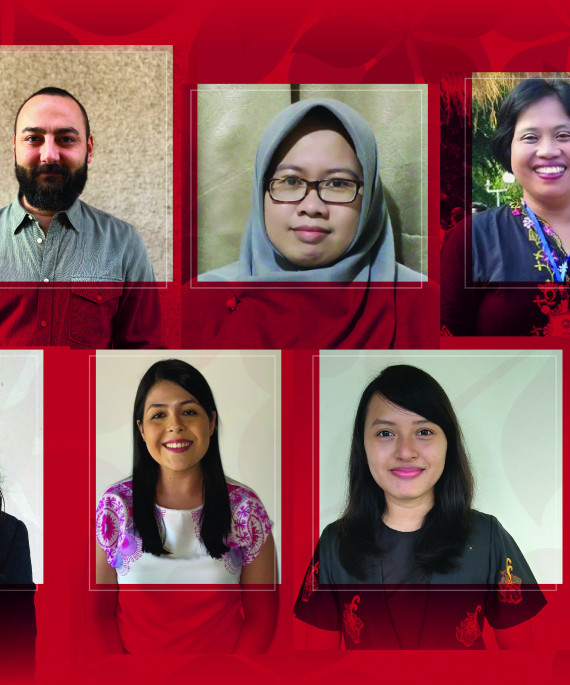
The Workforce Development and Education program in the College of Education and Human Ecology held its place as the No. 1 program ranked by U.S. News & World Report in its 2020 edition of America’s Best Graduate Schools.
Training teachers in vocation, career and technical education has a long and storied history at Ohio State. It began early in 1917 when the Smith-Hughes Act provided for the preparation of teachers of vocational subjects, including “agriculture, trades and industry and homemaking.”
Today, the program is in high demand because of the need for skilled workers to fill what the federal government estimates is six million unfilled jobs, according to the New York Times.
The college’s program, referred to by U.S. News and World Report as Technical/Vocational, offers degrees with and without licensure, including four specializations.
The Human Resource Development and Adult Learning program, overseen by Associate Professor David Stein, is for people interested in working in educational settings outside K-12.
Program graduates often enter the corporate world, where they are trainers at companies such as Huntington or Chase banks or Nationwide Insurance.
Or they work at universities such as Ohio State, providing training in management, the use of educational technology and more.
The three teacher education programs are:
The popular Career and Technical Education program currently enrolls approximately 160 teachers who are already on the job, teaching in Ohio classrooms.
“The majority of people who come into our master’s program are making a life change,” said Christopher Zirkle, associate professor and chair of the program. “They have decided to take their career in an entirely different direction.”
Many have bachelor’s degrees — in nursing, engineering, information technology and more — and are earning a master’s degree while getting their teaching license. Others have a master’s degree and just need the license. They teach during the day and hone their teaching skills in college classes during the late afternoon.
All these experts see the beauty of sharing their professional knowledge with the next generation of students.
For Laine Schrewe, ‘18 MA, the degree provides fundamental teaching methods to prepare a skilled population of work-ready graduates.
“After working as a design engineer for Honda for nine years, I realized that I was even more fascinated by figuring out how to help people learn than by engineering itself,” she said. “The program was the key to combining my two passions: engineering and teaching.”
Diverse students, diverse training
The program is one of the most diverse in the college. Students range in age from early 30s to 70s. Some are from Ohio; others come from Nigeria, Kenya and Vietnam.
“At one end of the spectrum, I had a retired PhD who once worked in a genetics lab at Yale. She now teaches biotechnology in Columbus City Schools,” Zirkle said. “At the other end is a master Lexus mechanic who worked on cars for years and now teaches high school students. I have had carpenters, an attorney, dental hygienists, an MD and more.”
In addition to the Career and Technical Education program, the master’s degree in Business Education attracts people who graduated with a business degree, worked in corporate settings and decided they want to teach.
Family and Consumer Science Education draws those with a bachelor’s degree, for instance in the college’s human development and family science, who choose teaching.
“Teachers in all these fields are in demand,” Zirkle said. “If I had 10 Family and Consumer Sciences Education graduates, I could place them all. Plus we have many scholarships available for the program.”
Outreach helps new teachers succeed
Zirkle and faculty not only prepare teachers, they also mentor new teachers. They observe in their graduates’ classrooms and laboratories six times per year for the first year, and give them feedback and assistance so they provide quality teaching.
A grant supporting this endeavor originates from the federal Carl Perkins Act and flows through the Ohio Department of Education.
“We do more outreach with our vocational-technical teachers at middle and high schools, correctional institutions and career centers than any other university teacher education program. Each semester we work with teachers from over 25 different school districts,” Zirkle said.
“Lecturer Susan Nell mentors people teaching in Ohio’s correctional institutions — the schools run by the Department of Youth Services and the Department of Rehabilitation and Corrections. A program faculty member is in schools almost daily. It also helps that Zirkle and other faculty were former teachers or principals.
“I taught middle school for five years, so I know what it’s like to teach a bunch of 13-year-olds,” Zirkle said. “I was an administrator in one of the career centers that I visit. It gives me credibility when I walk in the door.”
The program collaborates with the Agricultural Education program, an important part of vocational and technical education, in the College of Food, Agricultural and Environmental Sciences.
“We sit on their PhD candidates’ dissertation committees, and they sit on ours,” Zirkle said. “It’s positive because we’re interdisciplinary, which is encouraged these days.”



